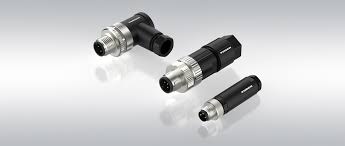How Do M12 and D Sub Connectors Improve Communication Systems in Electronics?

In the ever-evolving landscape of electronics, effective communication systems are critical for seamless data transmission and device interoperability. Among the myriad of components that facilitate this, M12 and D-Sub connectors stand out due to their reliability, versatility, and robustness. Understanding how these connectors function and contribute to communication systems is essential for professionals in the field and enthusiasts alike.
The Importance of Connectors in Communication Systems
At the heart of any electronic device, connectors play a pivotal role in enabling communication between different components. They serve as the bridge, allowing signals and power to flow between devices, ensuring that information is transmitted accurately and efficiently. As technology advances, the demand for connectors that can withstand harsh environments, provide superior performance, and offer compatibility across various devices has never been higher. This is where M12 and D Sub connectors come into play.
M12 connectors are renowned for their rugged design and are widely used in industrial applications, including factory automation, transportation, and robotics. Their circular shape and locking mechanism ensure a secure connection, making them ideal for environments that require durability and resistance to vibration and shock. On the other hand, D-Sub connectors are characterised by their rectangular design and are commonly found in computer and telecommunications applications. Their versatility allows them to accommodate a range of pin configurations, catering to various communication protocols.
M12 Connectors: A Closer Look
M12 connectors are often the go-to choice in scenarios where space is limited and reliability is paramount. Their compact size allows for easier integration into devices, while their robust construction ensures that they can withstand the rigours of industrial settings. These connectors typically feature a screw-locking mechanism that prevents accidental disconnection, which is particularly important in high-movement environments.
One of the key advantages of M12 connectors is their ability to support various communication protocols, including Ethernet, CAN bus, and fieldbus systems. This versatility makes them invaluable in industries such as automotive, where different systems need to communicate seamlessly. The ability to connect sensors, actuators, and controllers through a single M12 connector simplifies wiring and reduces potential points of failure, ultimately enhancing the overall efficiency of communication systems.
Moreover, M12 connectors are designed to meet stringent standards for environmental protection, making them suitable for use in outdoor applications and harsh conditions. With options for IP67 and IP68 ratings, these connectors can withstand dust, moisture, and temperature variations, ensuring reliable performance even in the most challenging environments. As a result, M12 connectors have become increasingly popular in sectors such as transportation, manufacturing, and renewable energy, where dependable communication is critical for operational success.
D-Sub Connectors: An Essential Component
D-Sub connectors, with their distinct D-shaped metal shell and dual-row pin configuration, have been a staple in the electronics industry for decades. These connectors are available in various sizes, including DB, DE, and DN, each accommodating different pin counts to suit specific applications. Their versatility allows for numerous configurations, making them ideal for a wide range of devices, from computers and printers to telecommunication equipment and industrial machines.
One of the significant benefits of D-Sub connectors is their compatibility with various communication protocols, such as RS-232, RS-422, and RS-485. This compatibility enables reliable data transmission over long distances, making them ideal for applications where signal integrity is paramount. In addition to data communication, D-Sub connectors can also be used for power transmission, further enhancing their functionality in diverse systems.
The design of D-Sub connectors allows for easy integration into printed circuit boards (PCBs), facilitating streamlined manufacturing processes. The connectors can be mounted directly onto the PCB, reducing the need for additional wiring and simplifying assembly. This design not only saves time but also improves the overall reliability of the connection by minimising the potential for human error during installation.
Furthermore, the widespread adoption of D-Sub connectors in the telecommunications industry has significantly contributed to the development of more robust communication systems. Their ability to provide secure and stable connections has made them a preferred choice for various applications, including data transfer and control signals in modems, routers, and switches.
Enhancing Communication Systems with M12 and D-Sub Connectors
The integration of M12 and D-Sub connectors into communication systems has revolutionised the way devices interact and exchange information. Their distinct features cater to different requirements, making them complementary components in many electronic applications.
M12 connectors excel in environments where durability and environmental resistance are critical. Their compact design and locking mechanism allow for secure connections in industrial applications, while their compatibility with multiple communication protocols simplifies system design. As industries continue to adopt automation and smart technologies, the demand for reliable connectors like M12 is likely to grow, ensuring seamless communication between devices.
Conversely, D-Sub connectors remain essential in applications where versatility and compatibility are paramount. Their extensive range of sizes and configurations allows engineers to tailor solutions to specific communication needs, making them indispensable in telecommunications and computing. The longevity of D-Sub connectors in the market speaks to their reliability and effectiveness in enhancing communication systems.
The Future of Connectors in Communication Systems
As technology advances, the role of connectors in communication systems will continue to evolve. The demand for faster data transfer speeds, higher bandwidth, and improved reliability is pushing manufacturers to innovate and develop connectors that can meet these challenges. M12 and D-Sub connectors will likely adapt to new standards, ensuring that they remain relevant in the face of emerging technologies.
One trend that is shaping the future of connectors is the rise of the Internet of Things (IoT). With more devices becoming interconnected, the need for robust and reliable connectors will be crucial in ensuring seamless communication between these devices. M12 connectors, with their ability to support various protocols, are well-positioned to play a significant role in IoT applications, enabling smart devices to communicate efficiently.
Additionally, advancements in materials and manufacturing processes are likely to enhance the performance of both M12 and D-Sub connectors. As engineers continue to seek solutions that provide better performance and reliability, the industry can expect to see innovations that improve the durability and efficiency of these connectors, allowing them to meet the demands of future communication systems.
Conclusion
In conclusion, M12 and D-Sub connectors significantly improve communication systems in electronics by providing reliable, versatile, and robust solutions for data transmission and device interoperability. Their unique characteristics cater to various industry needs, from harsh industrial environments to telecommunications applications. As technology advances, the importance of these connectors will only grow, shaping the future of communication systems and enabling the seamless interaction of electronic devices. Understanding the value of M12 and D-Sub connectors is essential for anyone involved in the electronics field, ensuring that communication systems remain efficient, reliable, and ready for the challenges ahead.




